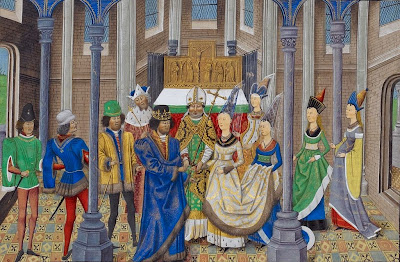 |
Drawing by
Jacques-Louis David of the Tennis
Court Oath.
|
The members moved to the tennis court of the king and vowed not to leave until achieving a constitution draft for France. The oath went down in history as the “Serment du jeu de paume” (literally tennis court oath) as it is called the tennis court today.
 |
This took place on June 20, 1789
when the King refused to recognize the "National Assembly" and
declared the activites of the Third Estate illegal.
|
It is recalled that the General States (Les Etats-Generaux) in 1789 were composed as follows: The First State included the high clergy of France (bishops, archbishops and cardinals). The second State was formed the nobility; and, the Third Estate was the common people represented by the bourgeoisie, the petty bourgeoisie, priests, and some impoverished nobles who owed money to the bourgeois, mainly traders.
 |
Louis Charles Auguste Couder:The
Tennis Court Oath, 20th June 1789, 1848
|
This third state began to take shape the French Revolution!
That Oath meant that French citizens formally stood in opposition to Louis XVI, for the first time, and the National Assembly's refusal to back down forced the king to make concessions.


















































